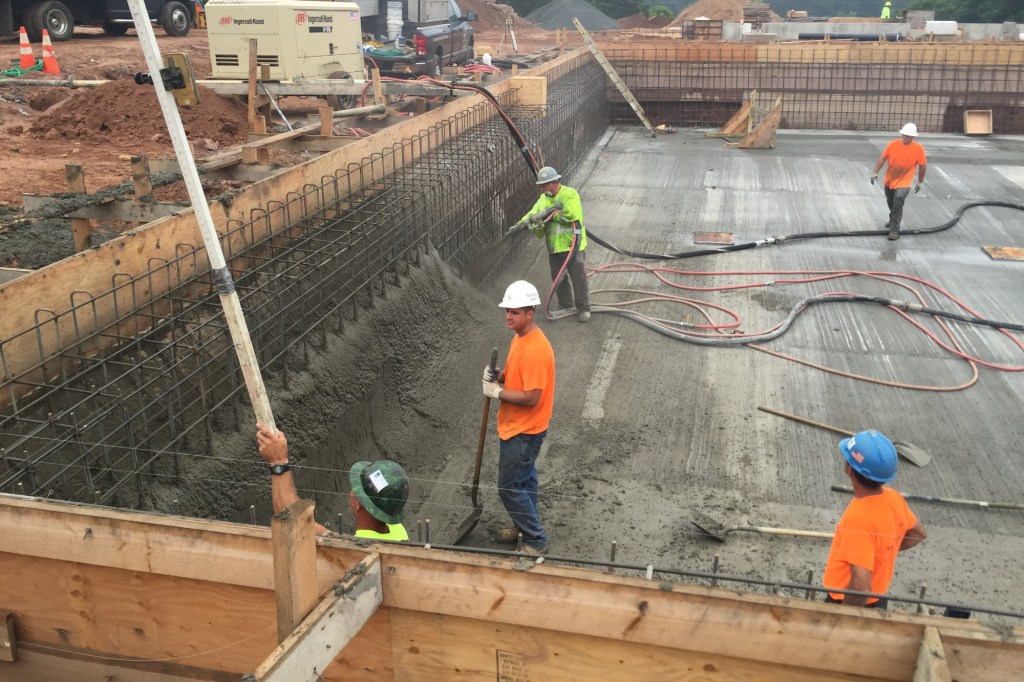Surprisingly, there are no stipulated minimum acceptable requirements in any standards or codes within the pool/spa industry to regulate the design, materials, strength, durability or method of placement to construct a watertight and durable swimming pool structure. To ensure the promised life span of pools and spas, codes and standards coming from the industry should address these issues.
PROPER CONTEXT
To my knowledge, the swimming pool industry is the only segment of the U.S. construction sector that has not specifically referenced and adopted the minimum acceptable requirements for strength and durability based on American Concrete Institute codes or International Code Council codes (the International Residential Code or International Building Code) for structurally reinforced concrete or shotcrete structures.
If the pool structure is engineered and designed to meet a specific service life — say, 100 years — then the structure should be engineered and designed to last that amount of time in the real-life environment in which it will exist (called the ‘durability design’ criterion). It’s not enough to create a structure that will last that 100 years in the type of controlled environment in which strength testing takes place (known as the ‘structural design’ criterion).
For this reason, I believe our industry standards should specify a minimum shotcrete strength of 4,500 pounds per square inch (psi), as specified in the American Shotcrete Association’s standard for water-containing structures.
Currently, the International Pool and Spa Code, in addressing the vessel’s strength, simply says, “It shall be enduring, impervious, smooth, cleanable, watertight, inert, durable and able to be suitable for the environment.” It doesn’t mention the word concrete, let alone define durability.
Because of this, we have pools built at 2,500 psi — the same strength as a sidewalk or a driveway. I believe that’s the source of many problems that occur within a few years after a pool is built, from rusting reinforcement and structural cracking to severe hydration discoloration.
While American Concrete Institute standards do establish a minimum strength of 2,500 psi for concrete structures (ACI-318), that is appropriate for retaining walls, driveways, patios and similar projects. In ACI 350, which applies to water-containing structures, the organization stipulates a minimum of 4,500 psi. It makes sense that pools and water features should adhere to this standard.
Additionally, ACI and IBC codes stipulate that the engineer must design not only for the structural design criterion, based on load factors and the intended function of the structure, but also must accommodate the durability criterion necessary to ensure that the structure reaches its target life span based on the intended usage and placement environment. For pool structures, that would include additional engineering and design to withstand constant water contact, one-sided evaporation, carbonation, chlorides, freeze/thaw, and abrasion resistance from the periodic removal and replacement of the interior finish.
The lack of self-governance in pool/spa industry codes and standards has opened the door for some engineers to believe they can forgo submitting to the prevailing ASTM, ACI and IBC construction specifications and codes. But these specifications and codes clearly stipulate that engineers must design and engineer all structurally reinforced concrete and shotcrete structures according to their intended usage and placement environment.
With the drastic increase in pool and spa construction, this has become more important than ever.
Watertight vs Waterproof
It is common sense that all swimming pool structures, as water-containing vessels, should be watertight.
For a structure to be considered watertight, no visible water should be able to penetrate through the structure. However, moisture and water vapor may penetrate. Therefore, the outside of the structure can be damp or moist yet still be considered watertight.
While the structure itself should be considered watertight, the area around dissimilar materials, such as projections or penetrations through the shell, are not, as there is some shrinkage of the concrete away from those elements. Components that project or penetrate through the structure must be made watertight by application of the interior finish coating, or by sealing before plastering.
While all swimming pools should be designed to be watertight, they do not need to be engineered to be waterproof except for certain placement environments. For a structure to be considered ‘waterproof’, no water or moisture should be allowed to penetrate through the structure.
While all pools are designed to be watertight, few are waterproof. However, certain projects may require it, including:
1. A suspended swimming pool (e.g. built on a shelf, pilasters, etc.);
2. A pool on an elevated floor or roof of a home or building;
3. A negative-edge pool where the back of the weir wall is exposed to air;
4. When part of the pool is shared by the adjoining wall or structural member of another structure, such as a house, wall, or water feature.
Waterproofing may be incorporated into the concrete mix design, but most often is achieved through a holistic approach, or a waterproofing system. This approach may entail special engineering to enhance the impermeability of the structure as well as special products and methods, often proprietary, to create a redundant waterproofing process. In some cases, it may be necessary to construct the pool within a waterproof vault.
When necessary, it may be possible to waterproof a pool structure after it has been placed, by employing a systematic approach of negative-side and/or positive-side waterproofing products, followed by a bond coat, then the installation of tile, rock, or other finish materials, and finally the interior finish.
